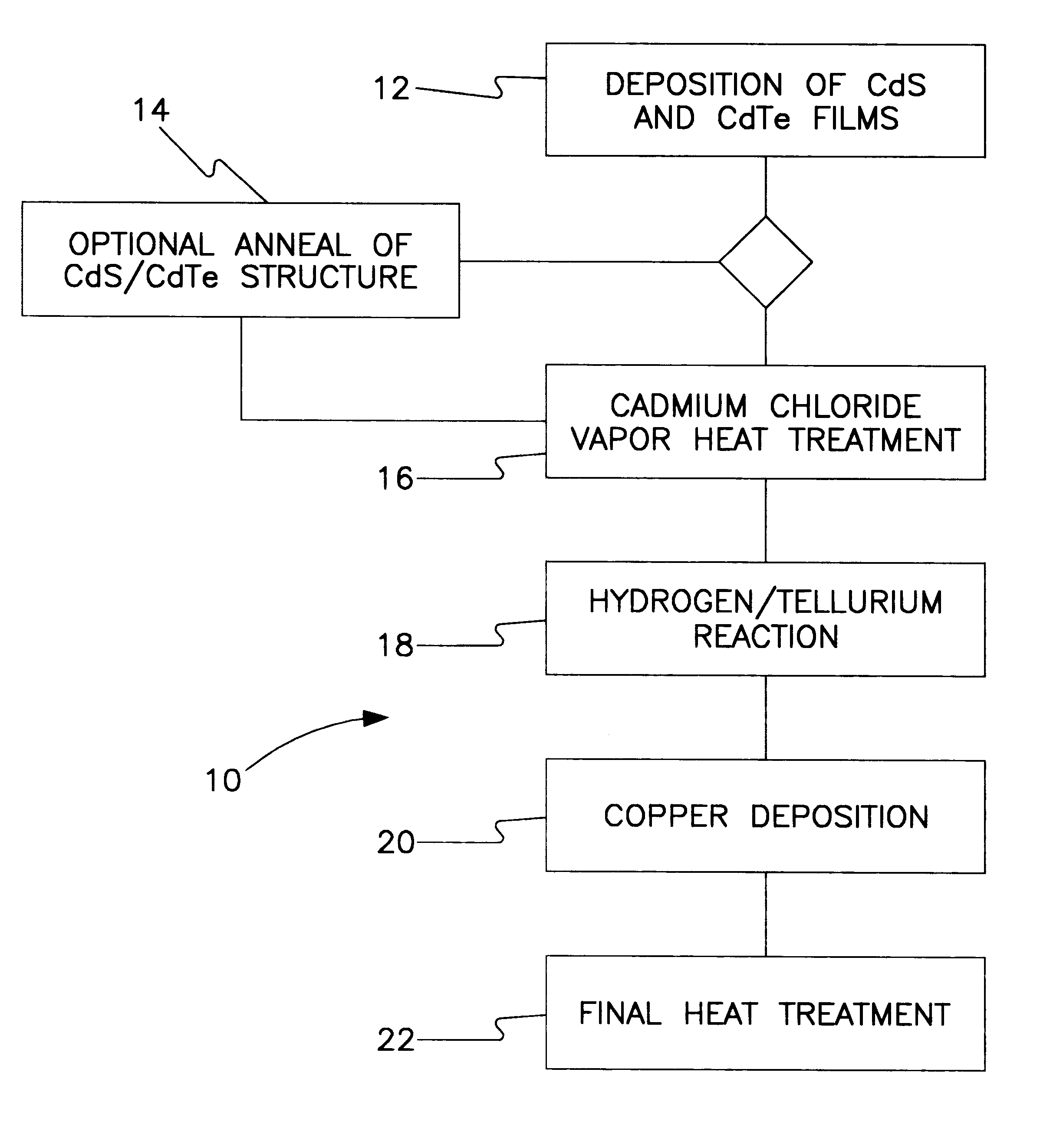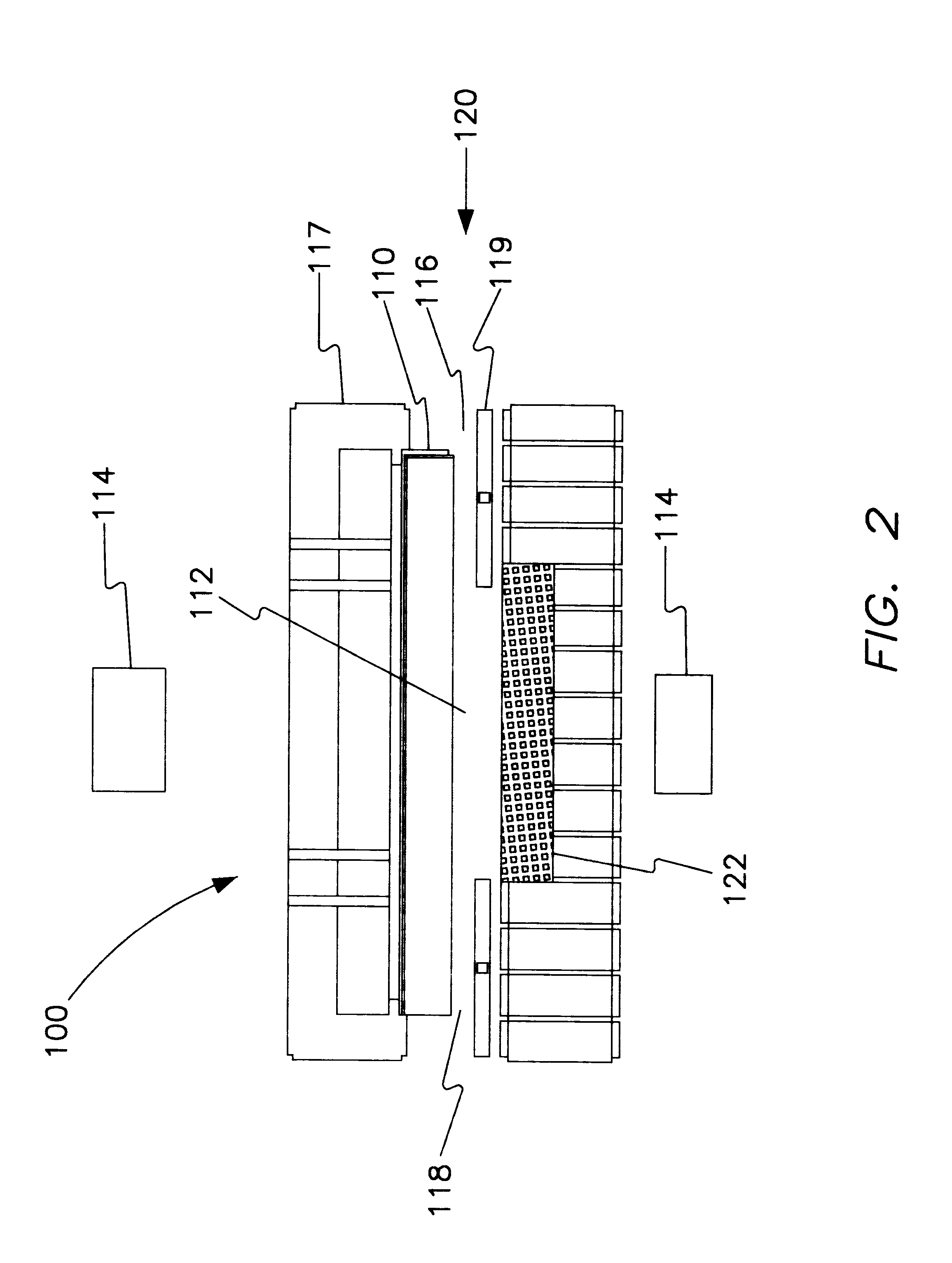All-vapor processing of p-type tellurium-containing II-VI semiconductor and ohmic contacts thereof
a technology of which is applied in the field of all-vapor processing of p-type tellurium-containing iivi semiconductor and ohmic contact thereof, can solve the problems of inability to use in a safe, low-cost manufacturing facility, and the innate properties of the semiconductor are not conducive to safe use, so as to improve the quality control of photovoltaic manufacturing, reduce manufacturing costs and pollution, and increase production efficiency
- Summary
- Abstract
- Description
- Claims
- Application Information
AI Technical Summary
Benefits of technology
Problems solved by technology
Method used
Image
Examples
Embodiment Construction
This example describes the method and chemistry of the all-vapor process used to fabricate solar cells from evaporated CdTe films. Table 3 shows the processing steps employed to fabricate solar cells from evaporated CdTe / CdS structures. For the chemical analysis, we will focus on steps 5 and 6, reaction of CdTe surface with Te / H.sub.2 vapor and deposition / reaction of Cu.
As discussed supra, the back surface of the CdTe film contains CdO and native oxides. The net result of the wet chemical contacting process is removed of these oxides and production of a Te layer. However, the invented method facilitates oxide removal and Te-layer production by reacting the CdO-containing surface in an overpressure of Te and H.sub.2. As illustrated in Equation 7, the H.sub.2 component is essential to obtain oxidation of Cd by Te:
CdO (s)+Te (g)CdTe (s)+0.5 O.sub.2 (g), G.sub.r.times.n (200.degree. C.)=+28.07 kcal / mol--Not Favored, Equation 7
CdO (s)+Te (g)+H.sub.2 (g)CdTe (s)+H.sub.2 O (g) G.sub.r.time...
PUM
| Property | Measurement | Unit |
|---|---|---|
| partial pressure | aaaaa | aaaaa |
| thickness | aaaaa | aaaaa |
| thickness | aaaaa | aaaaa |
Abstract
Description
Claims
Application Information
 Login to View More
Login to View More - R&D
- Intellectual Property
- Life Sciences
- Materials
- Tech Scout
- Unparalleled Data Quality
- Higher Quality Content
- 60% Fewer Hallucinations
Browse by: Latest US Patents, China's latest patents, Technical Efficacy Thesaurus, Application Domain, Technology Topic, Popular Technical Reports.
© 2025 PatSnap. All rights reserved.Legal|Privacy policy|Modern Slavery Act Transparency Statement|Sitemap|About US| Contact US: help@patsnap.com



